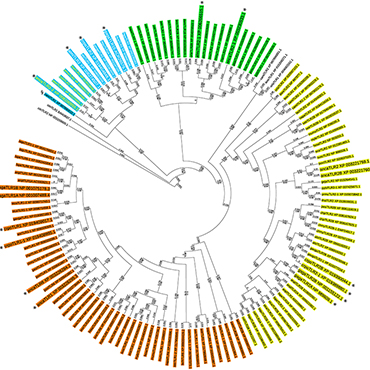
- by administrator
- 13 November 2018
Evolutionary Regression and Species-Specific Codon Usage of TLR15.
Voogdt CGP, Merchant ME, Wagenaar JA, van Putten JPM.
Front Immunol. 2018 Nov 13;9:2626.
Toll-like receptors (TLRs) form an ancient family of innate immune receptors that detect microbial structures and activate the host immune response. Most subfamilies of TLRs (including TLR3, TLR5, and TLR7) are highly conserved among vertebrate species. In contrast, TLR15, a member of the TLR1 subfamily, appears to be unique to birds and reptiles. We investigated the functional evolution of TLR15. Phylogenetic and synteny analyses revealed putative TLR15 orthologs in bird species, several reptilian species and also in a shark species, pointing to an unprecedented date of origin of TLR15 as well as large scale reciprocal loss of this TLR in most other vertebrates. Cloning and functional analysis of TLR15 of the green anole lizard (Anolis carolinensis), salt water crocodile (Crocodylus porosus), American alligator (Alligator mississippiensis), and chicken (Gallus gallus) showed for all species TLR15 specific protease-induced activation of NF-κB, despite highly variable TLR15 protein expression levels. The variable TLR15 expression was consistent in both human and reptilian cells and could be attributed to species-specific differences in TLR15 codon usage. The species-specific codon bias was not or barely noted for more evolutionarily conserved TLRs (e.g., TLR3). Overall, our results indicate that TLR15 originates before the divergence of chondrichthyes fish and tetrapods and that TLR15 of both avian and reptilian species has a conserved function as protease activated receptor. The species-specific codon usage and large scale loss of TLR15 in most vertebrates suggest evolutionary regression of this ancient TLR.
